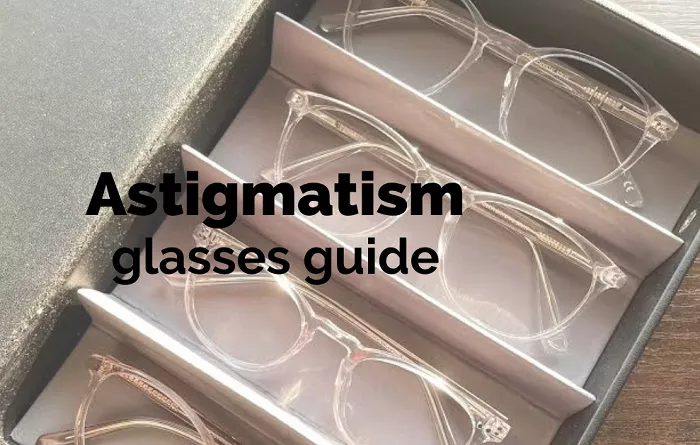Astigmatism is a common vision condition that causes blurred or distorted vision due to an irregular curvature of the cornea or lens. For individuals with high astigmatism, selecting the right eyeglass frames is crucial to ensure optimal vision correction, comfort, and aesthetic appeal. This guide delves into the various aspects of choosing the best frames for high astigmatism, providing insights into frame shapes, materials, lens considerations, and more.
What is Astigmatism
Astigmatism occurs when the eye’s cornea or lens isn’t perfectly curved, leading to blurred or distorted vision. High astigmatism refers to a more pronounced irregularity, often requiring specialized corrective lenses. Properly selected frames can enhance the effectiveness of these lenses and contribute to overall visual comfort.
Importance of Frame Selection for High Astigmatism
The choice of eyeglass frames plays a significant role in the effectiveness of vision correction for high astigmatism. Factors such as frame shape, size, and material can influence lens thickness, weight distribution, and overall comfort. Selecting appropriate frames ensures that the corrective lenses function optimally and that the glasses are comfortable for extended wear.
Ideal Frame Shapes for High Astigmatism
1. Round Frames
Round frames are often recommended for high prescriptions, including high astigmatism, as they can help minimize lens thickness and distortion. The uniform shape allows for even distribution of lens weight, enhancing comfort.
2. Square Frames
Square frames provide a balanced aesthetic and can accommodate high-index lenses effectively. Their structure supports the lens edges, reducing the risk of lens displacement.
3. Rectangular Frames
Rectangular frames offer a classic look and are suitable for high astigmatism prescriptions. Their shape allows for efficient lens placement, ensuring optimal vision correction.
4. Cat-Eye Frames
Cat-eye frames, with their upswept outer edges, can be a stylish choice for those with high astigmatism. When selected in appropriate sizes, they can accommodate high-index lenses without compromising on aesthetics.
Frame Materials Suitable for High Astigmatism
Acetate
Acetate frames are lightweight, durable, and available in various colors and patterns. They can support high-index lenses effectively, making them a popular choice for high astigmatism prescriptions.
Metal
Metal frames, such as those made from stainless steel or titanium, offer strength and a sleek appearance. They can be crafted to accommodate high-index lenses, ensuring both functionality and style.
Combination Frames
Frames that combine acetate and metal elements provide the benefits of both materials. They offer durability, flexibility, and aesthetic appeal, making them suitable for high astigmatism lenses.
Lens Considerations for High Astigmatism
High-Index Lenses
High-index lenses are thinner and lighter than standard lenses, making them ideal for high astigmatism prescriptions. They reduce the overall weight of the glasses and improve comfort.
Aspheric Lenses
Aspheric lenses have a flatter curvature, which can help minimize distortion and provide a more natural appearance. They are beneficial for high astigmatism corrections.
Anti-Reflective Coatings
Applying anti-reflective coatings to lenses can reduce glare and improve visual clarity, especially in low-light conditions. This is particularly helpful for individuals with high astigmatism.
Frame Size and Fit
Selecting the appropriate frame size ensures that the lenses are positioned correctly in front of the eyes, which is crucial for effective vision correction. Frames that are too large or too small can cause discomfort and compromise visual clarity.
Avoiding Certain Frame Styles
Individuals with high astigmatism should avoid rimless or semi-rimless frames, as they may not provide adequate support for high-index lenses. Additionally, wraparound or curved frames can distort vision by bending light in unintended ways.
Professional Consultation
Consulting with an eye care professional is essential when selecting frames for high astigmatism. They can provide personalized recommendations based on your prescription, facial features, and lifestyle needs.
Conclusion
Choosing the right frames for high astigmatism involves considering various factors, including frame shape, material, lens type, and fit. By understanding these elements and seeking professional guidance, individuals can find eyewear that offers optimal vision correction, comfort, and style.
Related topics:


